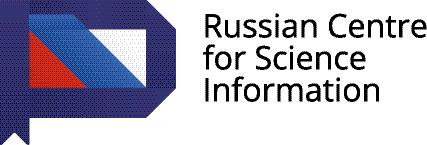SUBPOPULATION HETEROGENEITY OF NK CELLS DURING THE GENETIC MODIFICATION FOR SUBSEQUENT USE IN TARGETED THERAPY
- 作者: Streltsova M.A.1, Deev S.M.1,2, Sapozhnikov A.M.1, Grechikhina M.V.1, Vavilova J.D.1, Velichinskii R.A.1, Alekseeva N.A.1, Palamarchuk A.I.1, Ustiuzhanina M.O.1,3, Boyko A.A.1, Kovalenko E.I.1
-
隶属关系:
- Shemyakin-Ovchinnikov Institute of Bioorganic Chemistry of the Russian Academy of Sciences
- I.M. Sechenov First Moscow State Medical University
- Skolkovo Institute of Science and Technology
- 期: 卷 508, 编号 1 (2023)
- 页面: 41-44
- 栏目: Articles
- URL: https://journals.rcsi.science/2686-7389/article/view/135672
- DOI: https://doi.org/10.31857/S2686738922700068
- EDN: https://elibrary.ru/MVBLMI
- ID: 135672
如何引用文章
全文:
详细
Obtaining genetically engineered NK cells is one of the developing areas of immunotherapy. In this work, we analyzed the subset heterogeneity of NK cells subjected to retroviral transduction, taking into account the content of adaptive NK cell precursors. It has been shown that subpopulations of KIR2DL2/DL3+, as well as CD57–KIR2DL2/DL3+NKG2C+, can be modified with greater efficiency than the corresponding subpopulations that do not carry the KIR2DL2/DL3 and NKG2C markers. After genetic modification, the CD57–KIR2DL2/DL3+NKG2C+ cells began to express CD57 de novo, acquiring the adaptive NK cell phenotype.
作者简介
M. Streltsova
Shemyakin-Ovchinnikov Institute of Bioorganic Chemistry of the Russian Academy of Sciences
Email: lenkovalen@mail.ru
Russian Federation, Moscow
S. Deev
Shemyakin-Ovchinnikov Institute of Bioorganic Chemistry of the Russian Academy of Sciences; I.M. Sechenov First Moscow State Medical University
Email: lenkovalen@mail.ru
Russian Federation, Moscow; Russian Federation, Moscow
A. Sapozhnikov
Shemyakin-Ovchinnikov Institute of Bioorganic Chemistry of the Russian Academy of Sciences
Email: lenkovalen@mail.ru
Russian Federation, Moscow
M. Grechikhina
Shemyakin-Ovchinnikov Institute of Bioorganic Chemistry of the Russian Academy of Sciences
Email: lenkovalen@mail.ru
Russian Federation, Moscow
J. Vavilova
Shemyakin-Ovchinnikov Institute of Bioorganic Chemistry of the Russian Academy of Sciences
Email: lenkovalen@mail.ru
Russian Federation, Moscow
R. Velichinskii
Shemyakin-Ovchinnikov Institute of Bioorganic Chemistry of the Russian Academy of Sciences
Email: lenkovalen@mail.ru
Russian Federation, Moscow
N. Alekseeva
Shemyakin-Ovchinnikov Institute of Bioorganic Chemistry of the Russian Academy of Sciences
Email: lenkovalen@mail.ru
Russian Federation, Moscow
A. Palamarchuk
Shemyakin-Ovchinnikov Institute of Bioorganic Chemistry of the Russian Academy of Sciences
Email: lenkovalen@mail.ru
Russian Federation, Moscow
M. Ustiuzhanina
Shemyakin-Ovchinnikov Institute of Bioorganic Chemistry of the Russian Academy of Sciences; Skolkovo Institute of Science and Technology
Email: lenkovalen@mail.ru
Russian Federation, Moscow; Russian Federation, Moscow
A. Boyko
Shemyakin-Ovchinnikov Institute of Bioorganic Chemistry of the Russian Academy of Sciences
Email: lenkovalen@mail.ru
Russian Federation, Moscow
E. Kovalenko
Shemyakin-Ovchinnikov Institute of Bioorganic Chemistry of the Russian Academy of Sciences
编辑信件的主要联系方式.
Email: lenkovalen@mail.ru
Russian Federation, Moscow
参考
- Tolmachev V.M., Chernov V.I., Deyev S.M. Targeted nuclear medicine. Seek and destroy // Russian Chemical Reviews. 2022. V. 91. RCR5034.
- Shipunova V.O., Deyev S.M. Artificial scaffold polypeptides as an efficient tool for the targeted delivery of nanostructures in vitro and in vivo // Acta Naturae. 2022. V. 14 (1). P. 54–72.
- Yang C., Siebert J.R., Burns R., et al. Heterogeneity of human bone marrow and blood natural killer cells defined by single-cell transcriptome // Nature Communications. 2019. V. 10. P. 3931. https://doi.org/10.1038/S41467-019-11947-7
- Hammer Q., Rückert T., Borst E.M., et al. Peptide-specific recognition of human cytomegalovirus strains controls adaptive natural killer cells // Nature Immunology. 2018. V. 19. P. 453–463.
- Beziat V., Liu L.L., Malmberg J.A., et al. NK cell responses to cytomegalovirus infection lead to stable imprints in the human KIR repertoire and involve activating KIRs // Blood. 2013. V. 121. P. 2678–2688.
- Tu M.M., Mahmoud A.B., Makrigiannis A.P. Licensed and Unlicensed NK Cells: Differential Roles in Cancer and Viral Control // Frontiers in Immunology. 2016. V. 7. P. 166.
- Denman C.J., Senyukov V. V., Somanchi S.S., et al. Membrane-bound IL-21 promotes sustained Ex Vivo proliferation of human natural killer cells // PLoS One. 2012. V. 7. P. e30264.
- Streltsova M.A., Erokhina S.A., Kanevskiy L.M., et al. Analysis of NK cell clones obtained using interleukin-2 and gene-modified K562 cells revealed the ability of “senescent” NK cells to lose CD57 expression and start expressing NKG2A // PLoS One. 2018. V. 13. P. e0208469.
- Fauriat C., Long E.O., Ljunggren H.-G., et al. Regulation of human NK-cell cytokine and chemokine production by target cell recognition // Blood. 2010. V. 115. P. 2167–2176.
- Streltsova M.A., Barsov E. V., Erokhina S.A., et al. Retroviral gene transfer into primary human NK cells activated by IL-2 and K562 feeder cells expressing membrane-bound IL-21 // Journal of Immunological Methods. 2017. V. 450. P. 90–94.
- Kobyzeva P.A., Streltsova M.A., Erokhina S.A., et al. CD56dimCD57−NKG2C+ NK cells retaining proliferative potential are possible precursors of CD57+NKG2C+ memory-like NK cells // Journal of Leukocyte Biology. 2020. V. 108. P. 1379–1395.
- Pfefferle A., Jacobs B., Ask E.H., et al. Intra-lineage Plasticity and Functional Reprogramming Maintain Natural Killer Cell Repertoire Diversity // Cell Reports. 2019. V. 29. P. 2284–2294.










